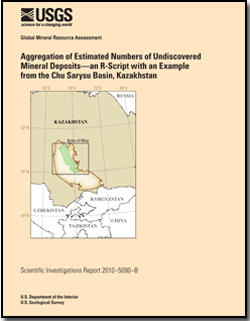Scientific Investigations Report 2010–5090–B

IntroductionMineral resource assessments completed by the U.S. Geological Survey during the past three decades express geologically based estimates of numbers of undiscovered mineral deposits as probability distributions. Numbers of undiscovered deposits of a given type are estimated in geologically defined regions. Using Monte Carlo simulations, these undiscovered deposit estimates are combined with tonnage and grade models to derive a probability distribution describing amounts of commodities and rock that could be present in undiscovered deposits within a study area. In some situations, it is desirable to aggregate the assessment results from several study areas. This report provides a script developed in open-source statistical software, R, that aggregates undiscovered deposit estimates of a given type, assuming independence, total dependence, or some degree of correlation among aggregated areas, given a user-specified correlation matrix. |
First posted July 14, 2011
For additional information: Part of this report is presented in Portable Document Format (PDF); the latest version of Adobe Reader or similar software is required to view it. Download the latest version of Adobe Reader, free of charge. |
Schuenemeyer, J.H., Zientek, M.L, and Box, S.E., 2011, Aggregation of estimated numbers of undiscovered deposits—an R-script with an example from the Chu Sarysu Basin, Kazakhtan: U.S. Geological Survey Scientific Investigations Report 2010–5090–B, 13 p., available at http://pubs.usgs.gov/sir/2010/5090/b/.
Introduction
Assessment Method
Statistics of Aggregation
Aggregation Code to Combine Undiscovered Deposit Estimates
Input File 1: Number of Deposits and Associated Probabilities
Input File 2: Correlation Matrix of Assessor- Defined Dependencies
Results
Discussion
Acknowledgements
References Cited
six appendixes
code